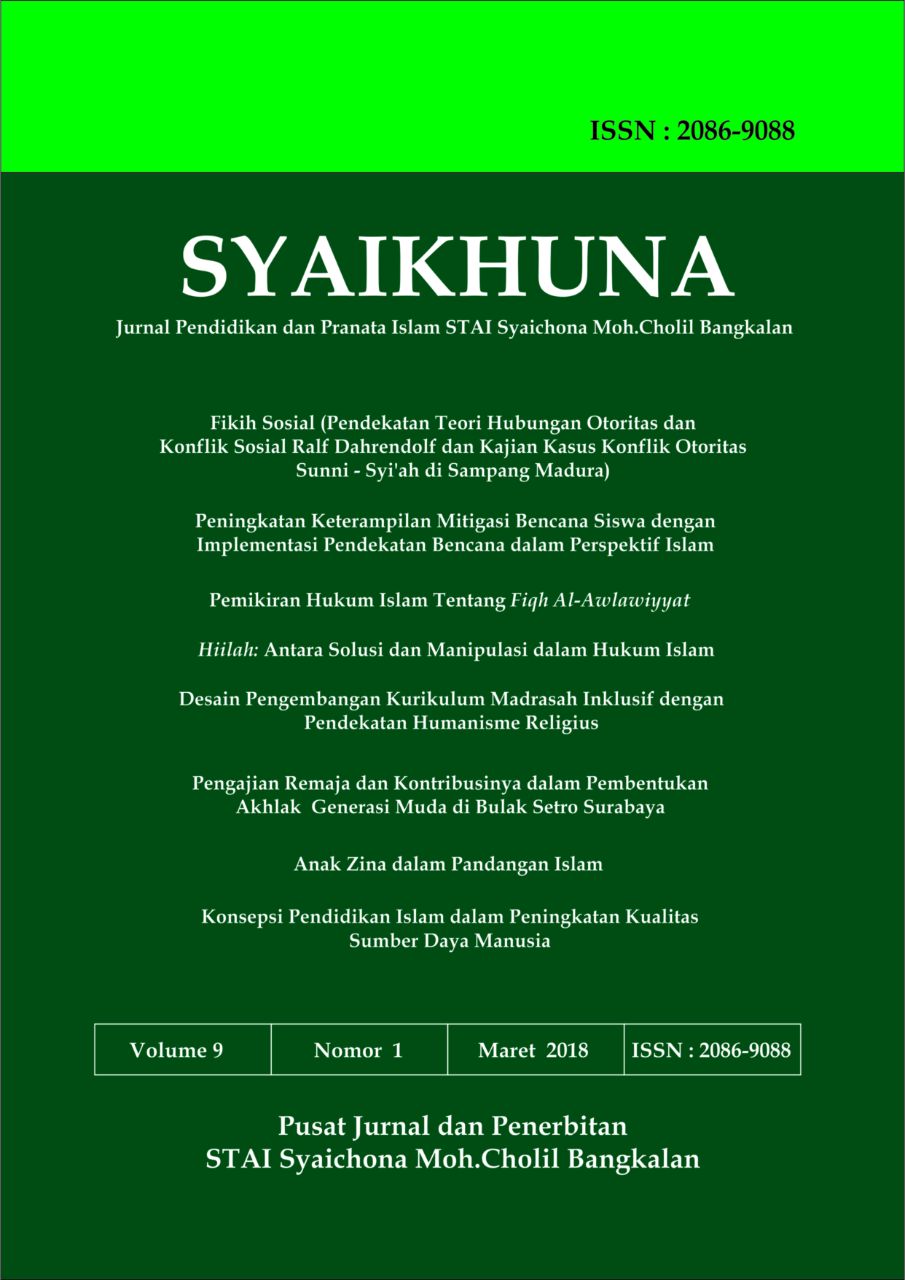Fikih Sosial (Pendekatan Teori Hubungan Otoritas dan Konflik Sosial Ralf Dahrendolf dan Kajian Kasus Konflik Otoritas Sunni-Syi’ah di Sampang Madura)
DOI:
https://doi.org/10.36835/syaikhuna.v9i1.3188Abstract
Ralf Dahrendorf's conflict theory states that the structural changes can be classified on the basis of their extremities and based on their abrupt or unexpected levels. In this case Ralf Dahrendorf admits that his theory of emphasis on conflict and social change is a one-sided perspective of social reality. This is because although the theory of structural functionalism and conflict theory is perceived by Ralf Dahrendorf as a valid perspective in approaching social reality, it includes only a part of the social reality that should be. Both theories are incomplete when used separately, and therefore should be used together, in order to obtain a complete picture of social reality. As an example of case studies, the intra-religious authoritative conflict occurring in Sampang between the Sunni and Shiite schools is a flow rush that has reduced social harmonization among the Sampang and Madurese communities in general, causing intense social tensions. Sociologically, the existence of ulema among the Madurese is not only regarded as a religious elite, but also as a non-formal leader by the Madurese people who are considered to have social authority to determine life and community life.Downloads
Published
2018-03-26
How to Cite
ulum, M. (2018). Fikih Sosial (Pendekatan Teori Hubungan Otoritas dan Konflik Sosial Ralf Dahrendolf dan Kajian Kasus Konflik Otoritas Sunni-Syi’ah di Sampang Madura). Syaikhuna: Jurnal Pendidikan Dan Pranata Islam, 9(1), 1–27. https://doi.org/10.36835/syaikhuna.v9i1.3188
Issue
Section
Articles





